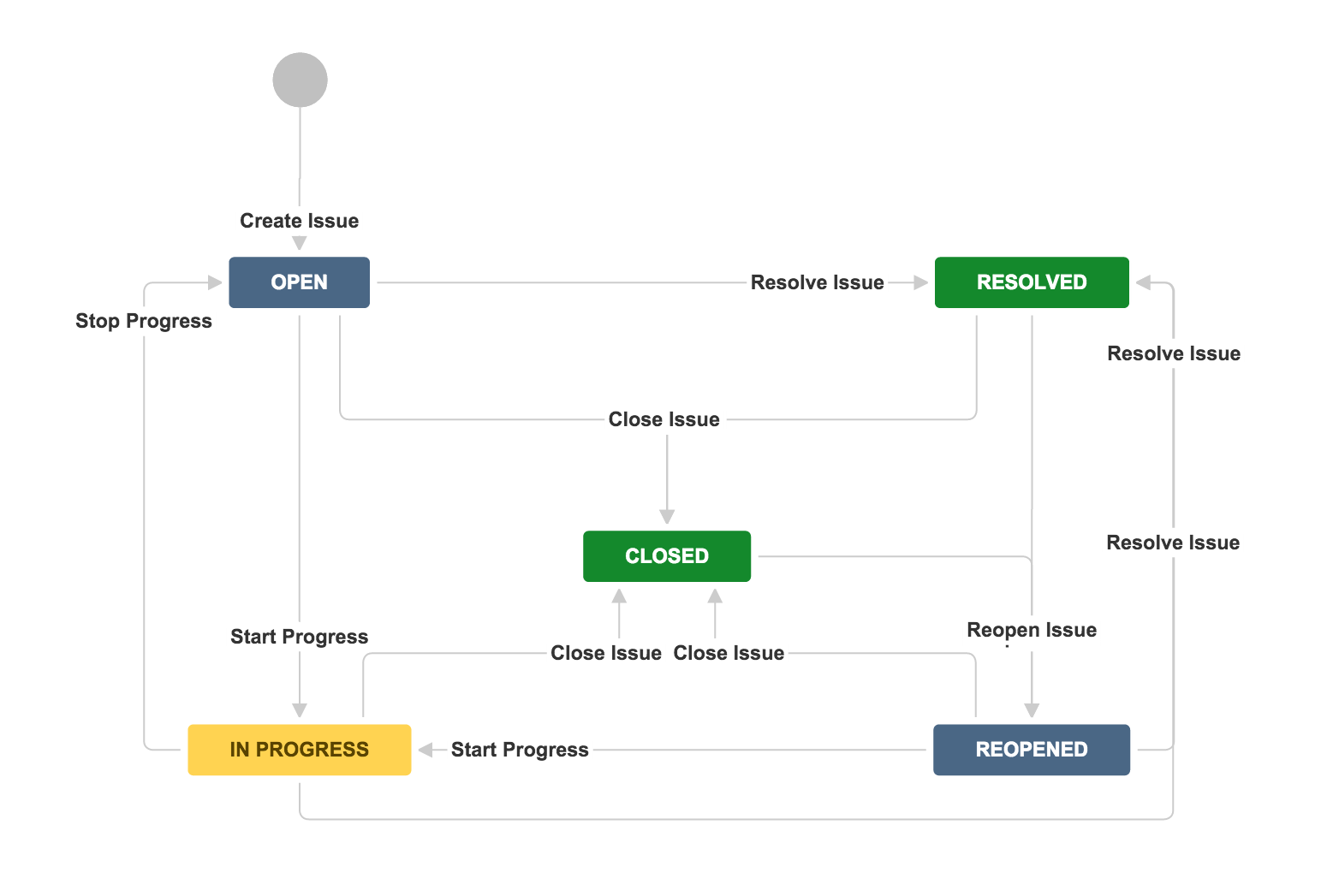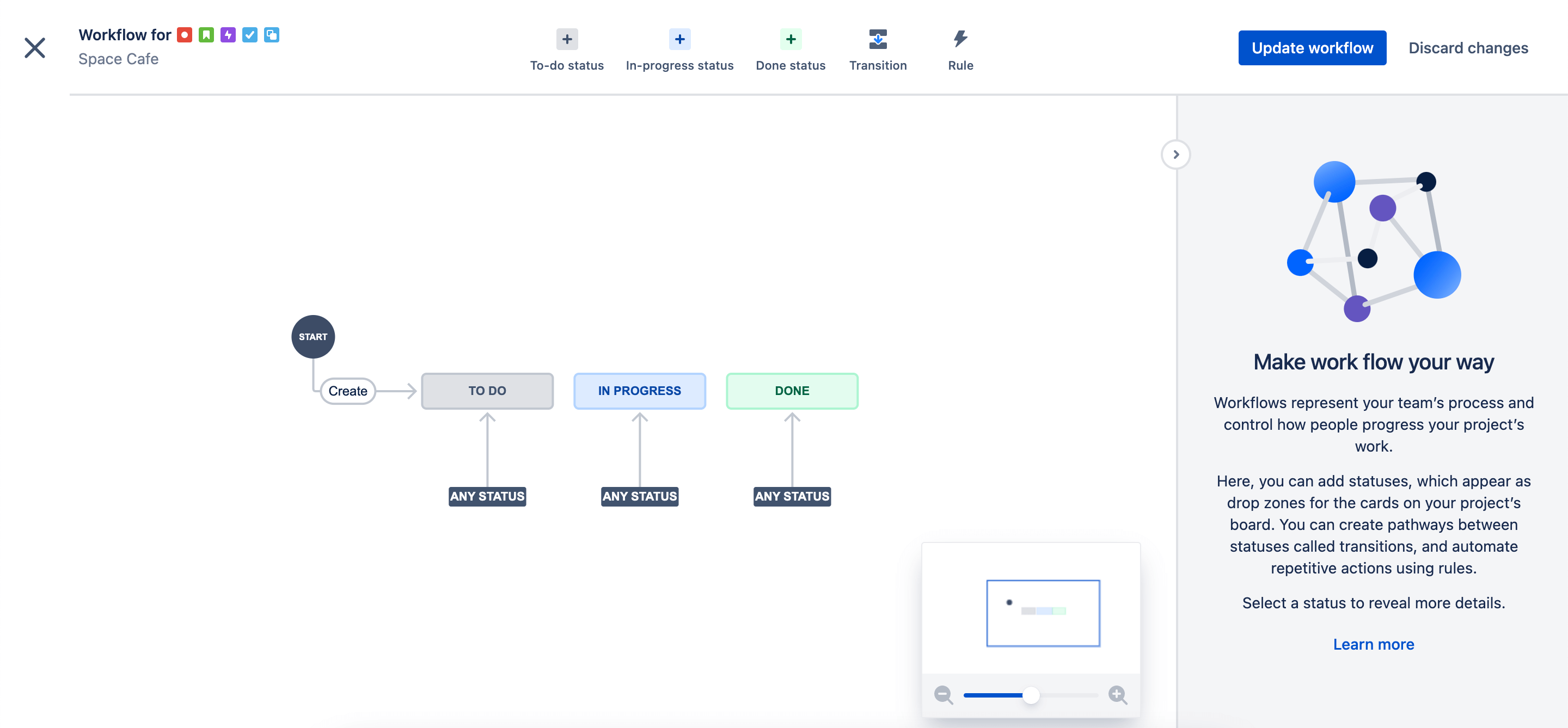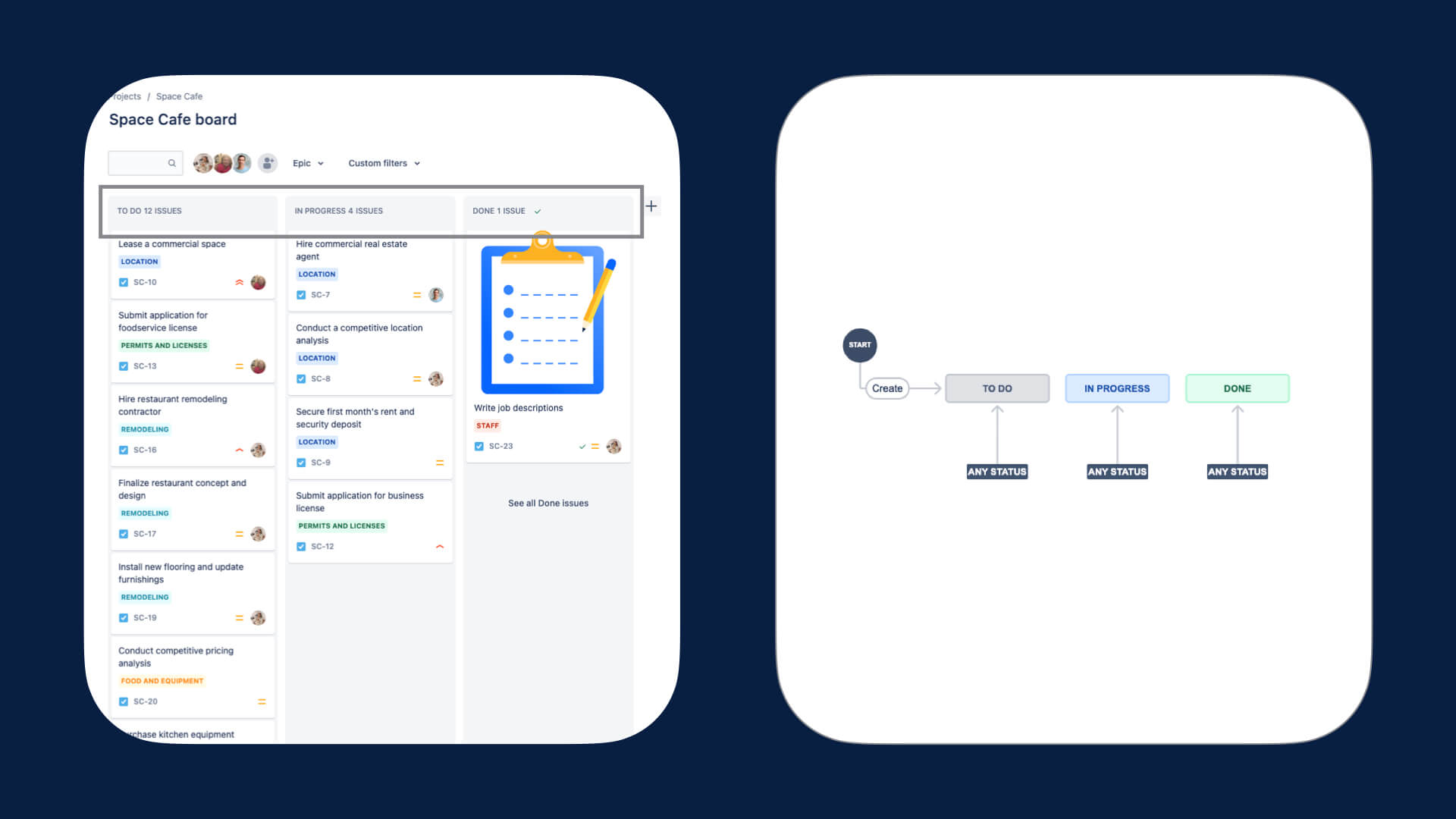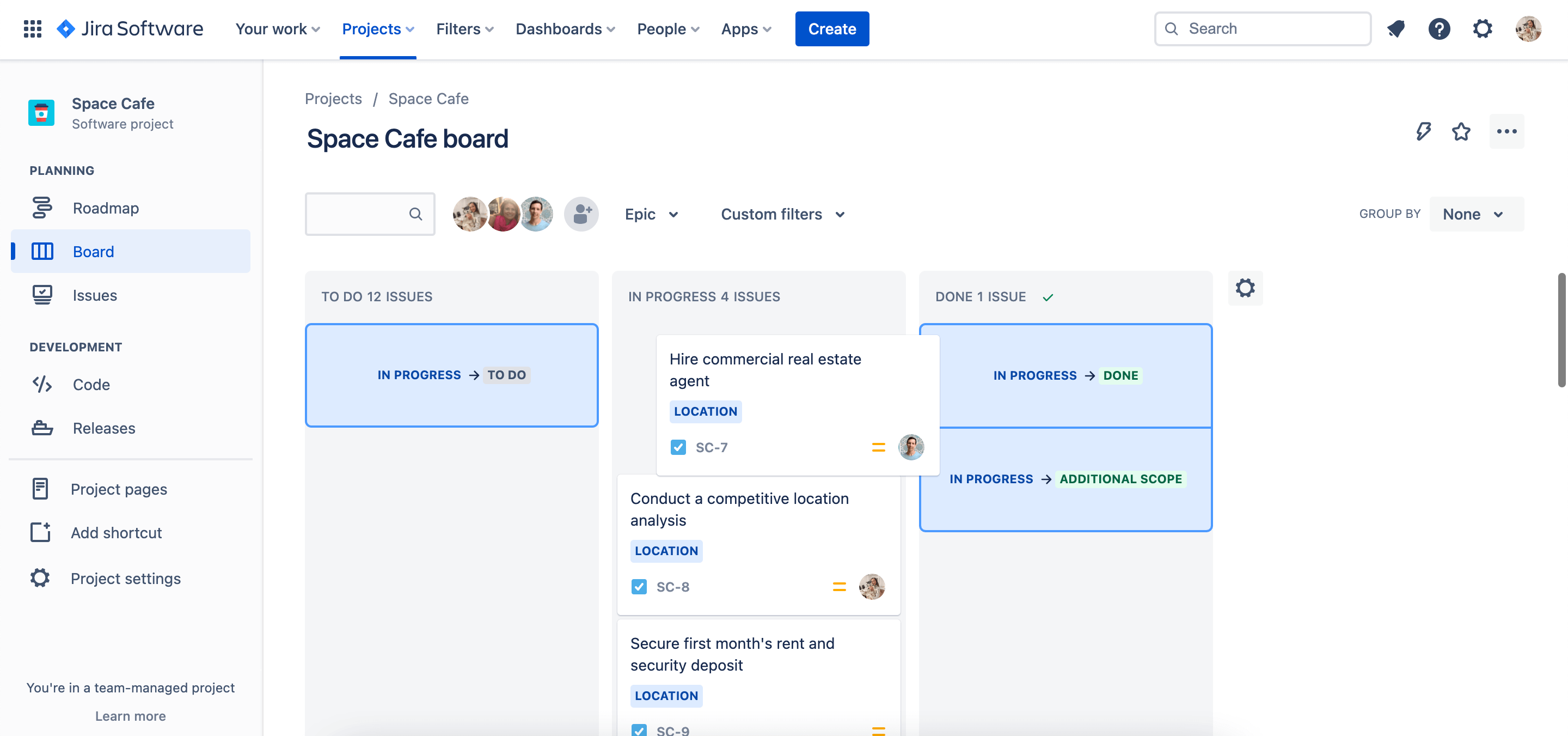Visão geral dos fluxos de trabalho do Jira
O que é um fluxo de trabalho do Jira?
In Jira, the path your work items take from creation to completion is called workflow. Each workflow is composed of a set of statuses and transitions that your work item moves through during its lifecycle and typically represents work processes within your organization.
A Jira workflow represents the process your team uses to take a work item from creation to completion. The illustration below is an example workflow:

Os fluxos de trabalho do Jira são compostos por 3 elementos exclusivos:
- Status: A status indicates where the work item is within the workflow. Some examples may include: Open, In Progress, In Review, Scheduled, Pending, Waiting, etc.
- Transition: A transition represents the action being taken to move a work item from status to status. A transition is a one-way link, so if a work item needs to move back and forth between two statuses, two transitions need to be created.
- Resolução: quando uma tarefa é concluída e não está mais aberta, ela precisa de um status de resolução. Alguns exemplos podem incluir: Fechado, Resolvido, Lançado, Completo, Concluído, Finalizado, Não realizado, etc. (Esse recurso só está disponível em projetos gerenciados pela empresa).
O que é um esquema do fluxo de trabalho?
Different types of work go through different processes. Jira enables teams to more accurately capture their workflows by associating different workflows with different work types. Like a permission scheme, a workflow scheme refers to the set of associations between workflows and work types. Every project requires at least one workflow scheme, and a workflow scheme can be applied to multiple projects.

Imagine o seguinte caso de uso:
There is a single development team at an organization, and the development team uses a Jira project to manage its work. The project has unique workflows for each of its work types:
- Bug work type refers to an error that needs to be resolved, and uses statuses like “Triaged” and “Fixed”.
- Story work type refers to feature-related work, and uses statuses like “Design WIP”, “Design Review”, and “Ready for Development”.
- Task and subtask work types refer to all other types of project work, and use statuses like “To Do”, “In Progress” and “Done”.
Over the course of a year, the development team doubles in size. The engineering manager splits the team into two and creates a second Jira project. Since both teams have similar kinds of work, the first project’s workflow scheme, the set of associations between workflows and work types, is applied to the second project.
With two teams owning their own projects, they can stay focused on relevant tasks and have the autonomy to manage their own work the way they see fit. At the same time, the engineering manager is able to get a complete and consistent view across all work items in both projects since they share the same workflow scheme.
No momento, os esquemas de fluxo de trabalho estão disponíveis apenas em projetos gerenciados pela empresa. Saiba mais
O que é editor de fluxo de trabalho?
O editor de fluxo de trabalho é uma ferramenta gráfica que permite criar, visualizar e editar as etapas e transições de um fluxo de trabalho. O usuário precisa entrar na conta com a permissão global de “Administradores do Sistema Jira” para acessar essa funcionalidade.

No momento, o editor de fluxo de trabalho está disponível apenas em projetos gerenciados pela equipe.
Qual é a relação entre um fluxo de trabalho e um quadro?
In Jira, a workflow is very closely related to the board. A workflow refers to the path your work items take from creation to completion. Each workflow is composed of statuses and transitions that your work item moves through during its lifecycle. A board is the tool used to visualize the work as it moves through your workflow.
Jira administrators often set up the board’s columns to match steps in the workflow. For teams with simple workflows, statuses available to work items in each column also mirror to the step in the workflow.

For teams with more complex processes, the board columns may only represent a subset of steps in the entire workflow. In this situation, teams will typically map multiple statuses to each column. This enables the team to more accurately represent the different workflows for different work types without cluttering the board.

Como a configuração avançada dos fluxos de trabalho se compara às regras de automação?
Os projetos gerenciados pela empresa vêm equipados com opções avançadas de configuração para que as equipes possam mapear e agilizar até mesmo os fluxos de trabalho mais complexos com facilidade. Por exemplo, você pode criar condições para controlar se uma transição deve ser executada por um usuário da instância.
Há recursos semelhantes às regras de automação como parte do Automation for Jira. No entanto, há algumas diferenças importantes:
- As configurações avançadas de fluxo de trabalho são associadas a cada projeto apenas por um esquema do fluxo de trabalho, enquanto as regras de automação podem ser aplicadas a uma variedade de funções.
- As configurações avançadas de fluxo de trabalho podem ser um pouco mais complicadas de serem feitas, mas são mais fáceis de serem gerenciadas em escala.
- As configurações avançadas de fluxo de trabalho podem sobrecarregar menos os recursos de hospedagem, pois as regras de automação disponíveis por projeto variam entre as edições. Compare os planos
No momento, a configuração avançada de fluxos de trabalho está disponível apenas em projetos gerenciados pela empresa.